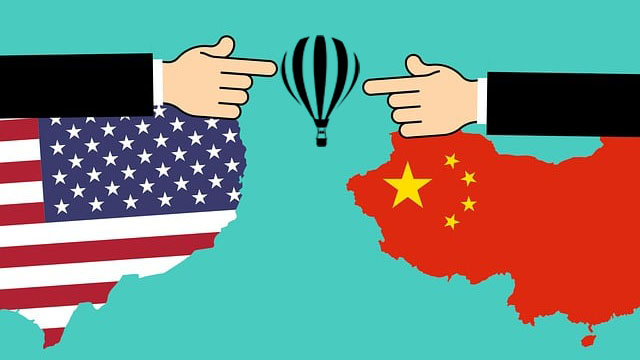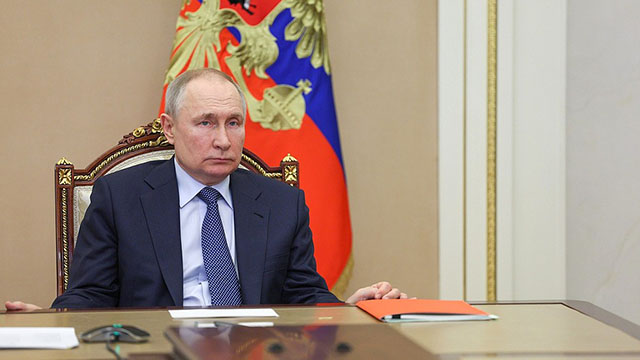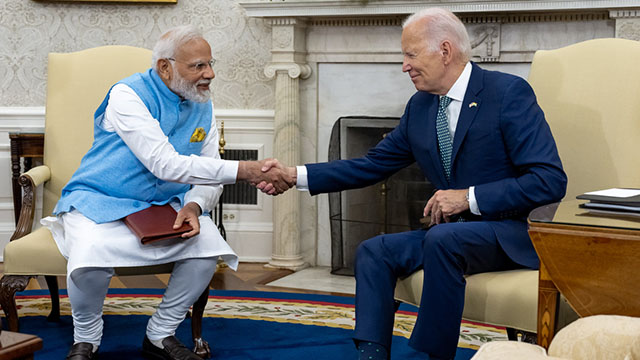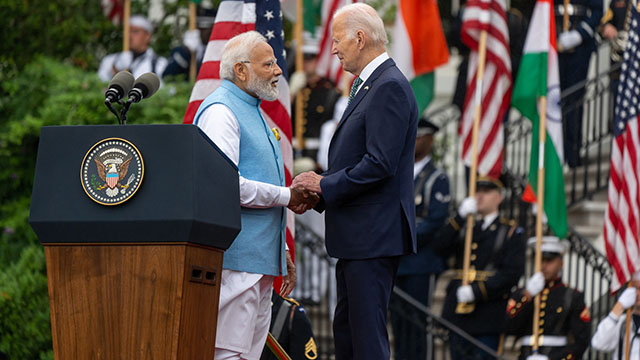In his book, “Red Star Over China”, American journalist Edgar Snow used the phrase “Red Star” metaphorically to describe the burgeoning communist movement in China. The US might not have witnessed such a “Red Star” in its sky, but a giant white “Chinese spy balloon” hovering over the sky has certainly made a rumpus in the American media and politics.
The American press reported that US President Joe Biden had ordered the defence officials to take a step against the alleged “Chinese spy balloon”, which China called an unmanned “civilian airship”, but it was not taken for the sake of the safety of the civilians of Montana state, where its spotting created a ruckus.
Besides, the Pentagon claimed that no hasty measures were taken as there was no chance that the Chinese balloon would disrupt the civil airlines’ services. A US official stated that the Chinese balloon was observed for two days, and they suspected it was sent to the American sky by China for spying.
The so-called “Chinese spy balloon” was flying over the northwestern part of the US, where its military airbases and nuclear stockpiles are reportedly located. However, the Pentagon has been saying for two days that this alleged “Chinese spy balloon” did not jeopardise American security. At last, the balloon was shot down on Saturday, February 4th, by a US Air Force F-22 fighter jet.
The question has been raised why the Chinese balloon was merely observed for two days when the location is militarily susceptible. Furthermore, it is a matter of argument why in an era of satellite and artificial intelligence, China would send a bulky “spy balloon” when it has developed itself immensely in science and technology.
On the other hand, China claimed that the unmanned “civilian airship” was used for climatic research, and it had entered American airspace due to “force majeure” —ie, outside human control— conditions. Furthermore, Beijing has also condemned the shooting down of the alleged “Chinese spy balloon” and stated that the US took such a hasty and indiscreet decision as a subterfuge to attack China politically.
China has repeatedly said that despite several efforts to contact the US authorities over the seemingly innocuous airship, the latter has destroyed it. The geopolitical specialists have voiced their concern that the incident is a microcosm of the current acrimony between the US and China. Such an unfortunate incident has further supervened the diplomatic relation between the two countries.
Apart from that, a second Chinese balloon had created another rumpus. Reuters later reported that the balloon with respective names and registration HBAL617 and N257TH is of an astronomical organisation named Aerostar, based in South Dakota.
Last Friday, the Chinese director of the office of the Central Foreign Affairs Commission of the Chinese Communist Party, Wang Yi, told the US Secretary of State, Antony Blinken, over the phone that China, as a responsible country, always abides by international law. It won’t tolerate any baseless speculation or propaganda against it.
The US Department of State spokesperson has stated that Blinken’s proposed tour to China has been postponed indefinitely. The proposed tour was about to take place on February 5th and 6th.
The American media Bloomberg reported that Blinken had condemned the sending of the “Chinese spy balloon” and described the incident as a glaring transgression of US sovereignty and international law. Blinken also said that the situation is not conducive to an immediate tour to China.
The Chinese statement after this reported “Chinese spy balloon” incident has raised doubt over the actual schedule of the proposed tour to China. Neither country has officially given any statement about it. CNN, on January 17th, reported on behalf of an anonymous American diplomat that Blinken’s China tour on February 6th would be a follow-up on President Biden’s meeting with Chinese President Xi Jinping in Bali late last year.
Global Times has cited the statement of the spokesperson of the Chinese Ministry of Foreign Affairs that China was informed from the latest official statement of the US that neither country had announced anything about the tour, and it respects the US decision of the postponement of the proposed tour.
Earlier this year, on January 27th, the US Air Force General Mike Minihan, Air Mobility Command commander, ordered the commanders for the highest military alacrity hinting at an impending battle with China. The world is sensing that the US has deliberately hyped the “Chinese spy balloon” incident to create another “Cold War” era sensation.
The erstwhile Soviet Union sent the world’s maiden satellite Sputnik to space on October 4th 1957. The Americans, who were then yet to get conversant with the satellite, suffered from dismay due to a giant thing lingering in the sky.
In the “Cold War” background, some politicians used the incident to spread anti-Soviet propaganda and fearmonger among the American people. The Americans later achieved significant success in science and technology.
In the 21st century, in the era of such advancement in science and technology, it is ironic that the US fears a balloon – like it feared the Soviet missiles and satellites in the 1950s. The “Chinese spy balloon” incident exposed how sensationalism is integral to American diplomacy even in the second decade of the 21st century. [Translated and edited from main Bengali article by Sourav Chakraborty).




